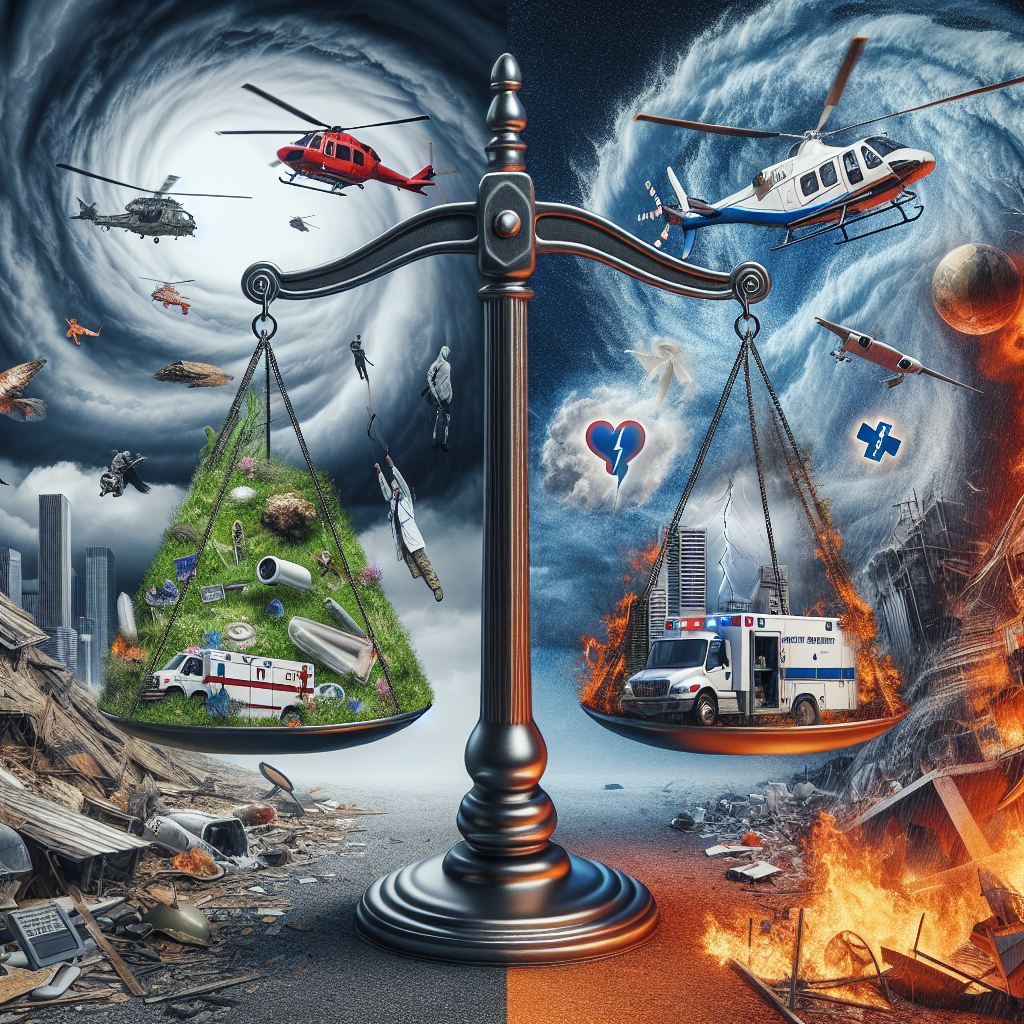Disasters can strike at any moment, leaving behind a trail of destruction and devastation. From natural disasters like earthquakes, hurricanes, and wildfires to man-made disasters such as industrial accidents and terrorist attacks, the impact on human lives and infrastructure can be catastrophic. In the face of such emergencies, timely and effective response is crucial to saving lives and minimizing damage.
In recent years, artificial intelligence (AI) has emerged as a powerful tool in disaster management, helping to improve both response and recovery efforts. By harnessing the power of AI, disaster management agencies and organizations can better predict, prepare for, and respond to disasters, ultimately saving lives and reducing the impact of these events on communities.
The Role of AI in Disaster Management
AI can play a significant role in all phases of disaster management, from preparedness and response to recovery and reconstruction. Here are some of the key ways in which AI is transforming the field of disaster management:
1. Early Warning Systems: AI can be used to analyze vast amounts of data from various sources, such as weather sensors, satellite imagery, and social media, to detect early warning signs of potential disasters. By identifying patterns and trends in the data, AI algorithms can help predict when and where a disaster is likely to occur, giving authorities valuable lead time to prepare and mobilize resources.
2. Risk Assessment: AI can also be used to assess the potential impact of a disaster on a given area, taking into account factors such as population density, infrastructure, and vulnerability. By analyzing this data, disaster management agencies can prioritize their response efforts and allocate resources more effectively.
3. Search and Rescue: In the aftermath of a disaster, AI-powered drones and robots can be used to search for survivors in hard-to-reach or dangerous areas. These unmanned aerial vehicles can quickly survey the disaster site, identify survivors, and relay their location to rescue teams, speeding up the rescue process and increasing the chances of survival.
4. Damage Assessment: AI can assist in assessing the extent of damage caused by a disaster, using image recognition and machine learning algorithms to analyze satellite imagery, aerial photographs, and drone footage. By quickly and accurately assessing the damage, authorities can prioritize their recovery efforts and allocate resources where they are most needed.
5. Resource Allocation: AI can help optimize the allocation of resources during a disaster response, by analyzing real-time data on the location of affected populations, the availability of supplies, and the capacity of response teams. By using AI algorithms to make data-driven decisions, disaster management agencies can ensure that resources are deployed efficiently and effectively.
6. Communication and Coordination: AI-powered chatbots and virtual assistants can help streamline communication and coordination among response teams, emergency services, and the public during a disaster. These tools can provide real-time updates, answer frequently asked questions, and facilitate the exchange of information, improving overall response efforts.
7. Predictive Analytics: AI can also be used to analyze historical data on past disasters and simulate different scenarios to predict the potential impact of future disasters. By leveraging predictive analytics, disaster management agencies can better prepare for and mitigate the effects of disasters, reducing the overall risk to communities.
FAQs
Q: How can AI help improve disaster preparedness?
A: AI can help improve disaster preparedness by analyzing data from various sources to identify early warning signs of potential disasters, assess the risk to specific areas, and predict the potential impact of a disaster. By using AI algorithms to analyze this data, disaster management agencies can better prepare for disasters and mobilize resources more effectively.
Q: Can AI be used to assist in disaster response efforts?
A: Yes, AI can be used to assist in disaster response efforts by analyzing real-time data on the location of affected populations, the availability of supplies, and the capacity of response teams. By using AI algorithms to make data-driven decisions, disaster management agencies can optimize the allocation of resources and coordinate response efforts more effectively.
Q: How can AI help in the recovery and reconstruction phase of a disaster?
A: AI can help in the recovery and reconstruction phase of a disaster by assisting in damage assessment, resource allocation, and communication and coordination efforts. By using AI-powered tools to assess the extent of damage, allocate resources efficiently, and streamline communication among response teams, disaster management agencies can speed up the recovery process and facilitate the reconstruction of affected areas.
Q: What are some of the challenges in implementing AI in disaster management?
A: Some of the challenges in implementing AI in disaster management include data privacy and security concerns, limited access to data in some regions, and the need for specialized skills and expertise to develop and deploy AI algorithms. Additionally, there may be resistance to adopting AI technologies due to concerns about job displacement and ethical implications.
In conclusion, AI has the potential to revolutionize the field of disaster management, improving response and recovery efforts and ultimately saving lives. By harnessing the power of AI to analyze data, predict disasters, and optimize resource allocation, disaster management agencies can better prepare for, respond to, and recover from disasters, reducing the overall impact on communities. As AI technology continues to advance, we can expect to see even greater innovations in disaster management, helping to build more resilient and prepared communities in the face of future disasters.

